Ubiquiti’s Salt Lake City-based engineering team has expanded its regulatory compliance and engineering development laboratory to include state-of-the-art anechoic chambers: the 10/5/3 m Multi-Axis Anechoic Chamber & the 3 m Anechoic Dome-Roofed Chamber.
This laboratory expansion gives us capabilities to speed up product development cycles, ensuring product quality and improving our time to market in a growing number of countries.
10/5/3 m Multi-Axis Anechoic Chamber
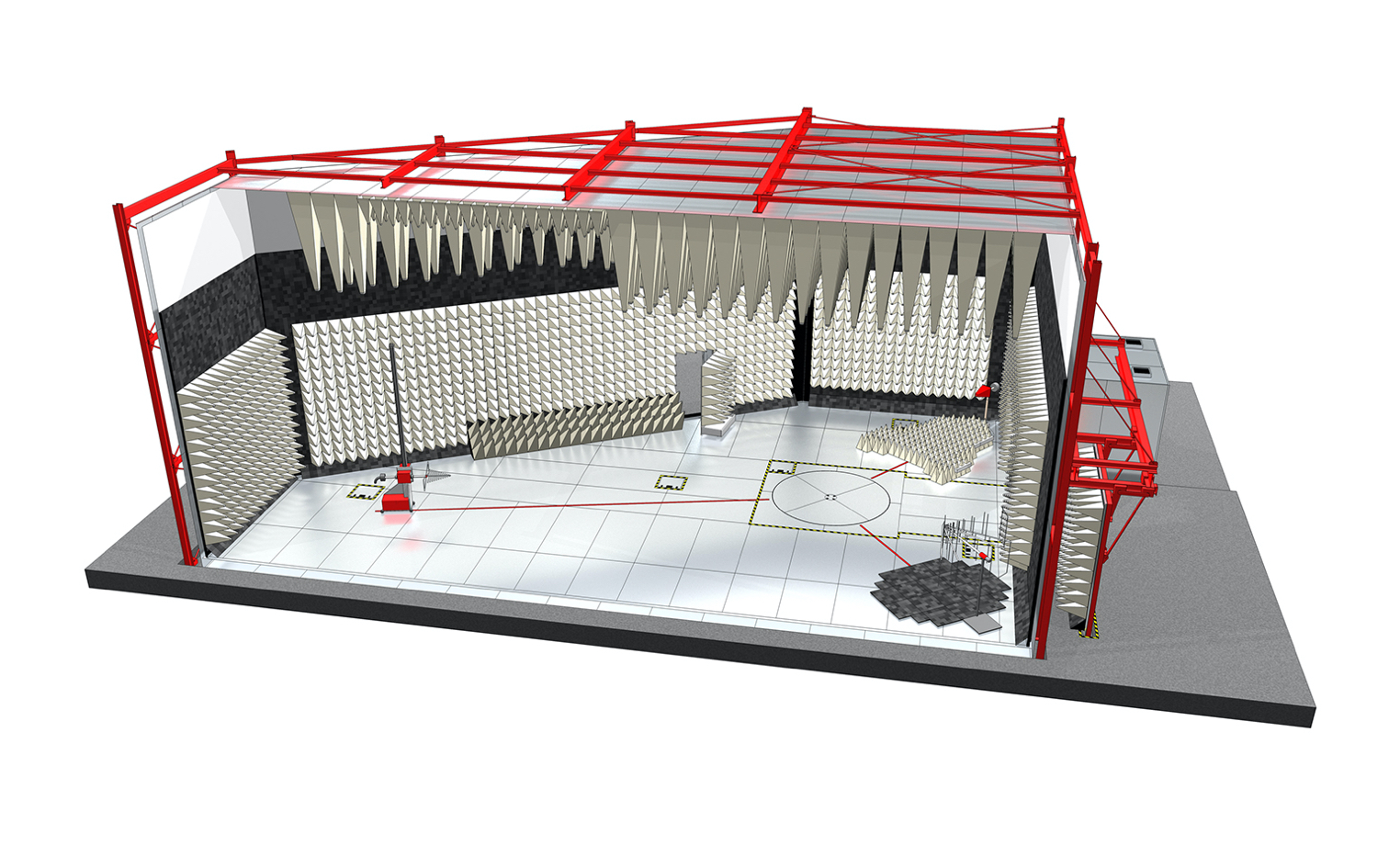
The Frankonia SAC-10 Plus Triton chamber (19.21 m x 12.08 m x 8.18 m) is the top-of-the-line model from the manufacturer. It’s the only one of its kind in the world outside the manufacturer’s lab.
The specialized “Triton” form factor allows us to have three different emission and immunity test setups in place at once:
- Test Axis 1: Low-frequency emissions compliant with ANSI C.63.4 + CISPR 16-1-4 (NSA)
- Test Axis 2: High-frequency and RF emissions compliant with ANSI C.63.10 + CISPR 16-1-4 (SVSWR)
- Test Axis 3: Radiated RF Immunity compliant with IEC/EN61000-4-3 (FU)
With this setup, our engineers can perform the required electromagnetic interference (EMI) and electromagnetic susceptibility (EMS) procedures with reduced setup changes, saving hours of time with each iterative test. Keeping the same setup in place reduces the time needed to complete the tests and makes them reproducible.
The Device Under Test (DUT) is placed on a non-reflective (styrofoam) table on top of a rotating turntable. Extensive test automation actuates the test equipment, antennas, and turntable while performing the required tests at all angles.
Anechoic chambers offer excellent isolation against interference from the surrounding environment. Carefully designed and positioned absorbers significantly remove radio frequency (RF) reflections. The SAC-10 Plus Triton chamber provides a 9 kHz to 40 GHz measurement frequency range. The metal exterior shielding provides over 100 dB of attenuation from the outside world.
How much is 100 dB attenuation in practice? Consider a case with a tower-top macro LTE base station that has high-gain antennas at a distance of 5 m from the chamber. To get service inside the chamber, the phone needs at least -100 dBm signal level. With a typical equipment setup, the signal level remains below -100 dBm inside the chamber and there is no LTE service.
3 m Dome-Roofed Anechoic Chamber
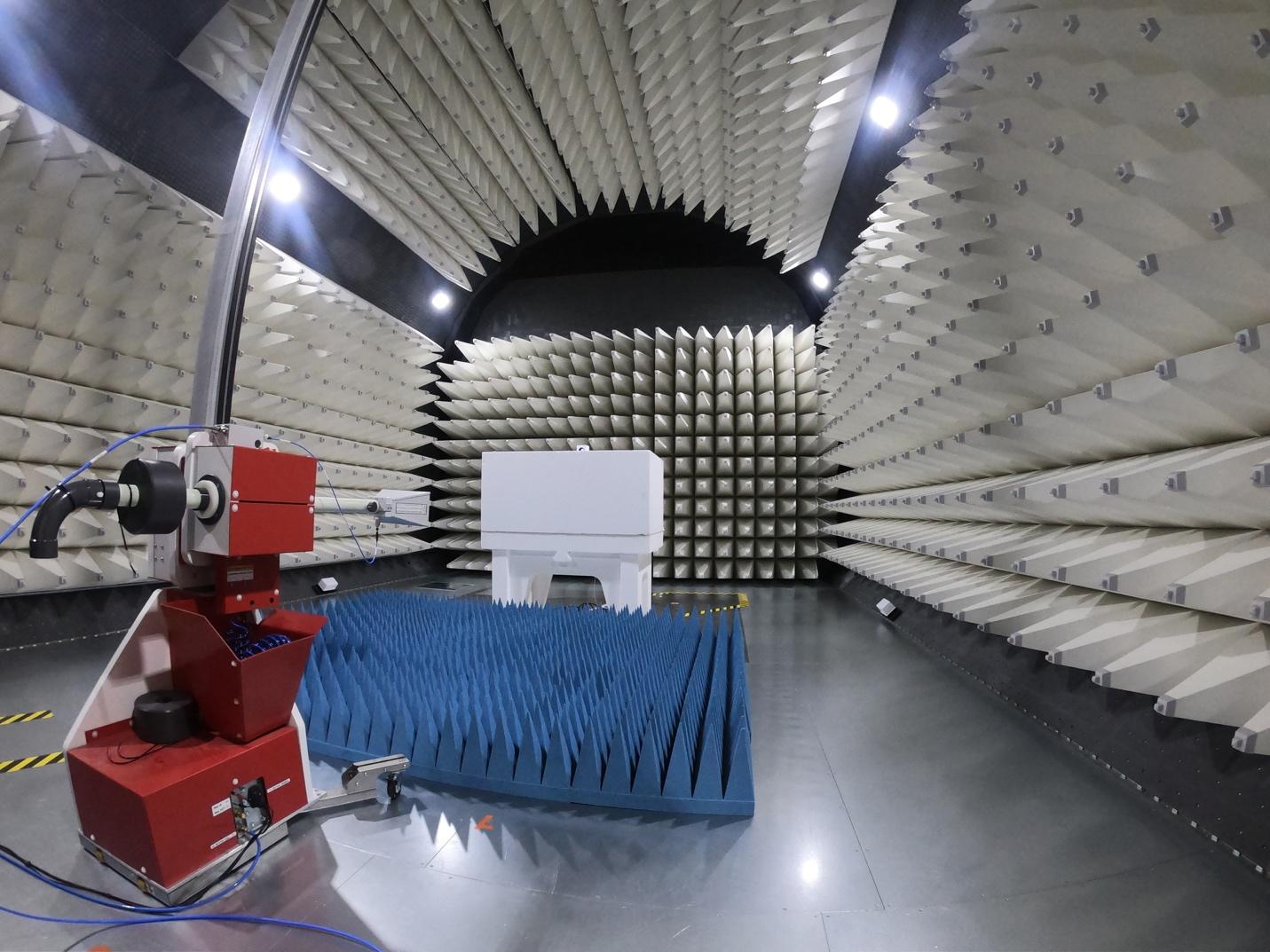
The other newly constructed chamber, the Frankonia SAC-3 Plus L (9.23 m x 6.53 m x 6.00 m), is a versatile, fully compliant Electromagnetic Compatibility (EMC) testing room. We use this chamber for emissions and immunity testing in parallel with the larger SAC-10 chamber.
The dome-shaped roof design combined with RF absorbers minimizes reflections and offers excellent measurement performance. The SAC-3 chamber provides over 110 dB isolation from the outside world. Similar to the larger chamber room, the fully automated test routines control the turntable and antenna height, as well as run the test equipment.
Anechoic — No Reflections
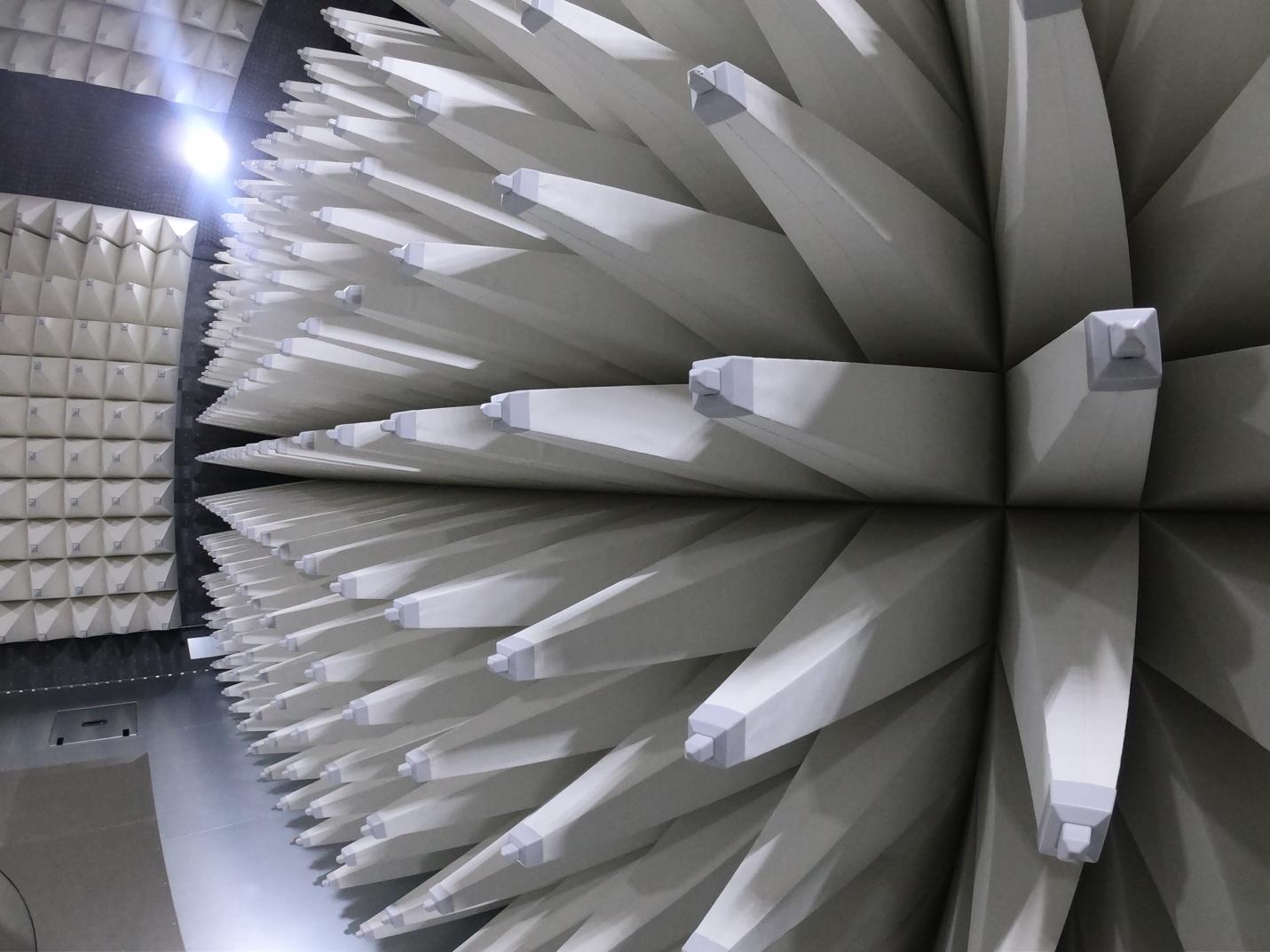
Anechoic chambers provide significantly reduced reflections and external interference levels, making measurements repeatable and accurate.
Electromagnetic waves propagate, reflect, and refract differently depending on the frequency and surrounding structures. The following techniques are important for RF and anechoic chamber designs.

While our chambers provide a drastic reduction in RF reflections, they are not intended to be completely anechoic by design (i.e. semi-anechoic).
Performing measurements in an anechoic chamber have certain unique consequences. Multiple-input, multiple-output (MIMO) technology used in Wi-Fi relies on multiple spatial signal paths created by reflections. Performance measurements, for example, throughput, require adding metallic RF-reflecting materials inside the chamber. Even in a perfect interference-free environment, in the absence of reflections and multipath propagation, Wi-Fi throughputs are low.
Control Room Hosts Test Equipment
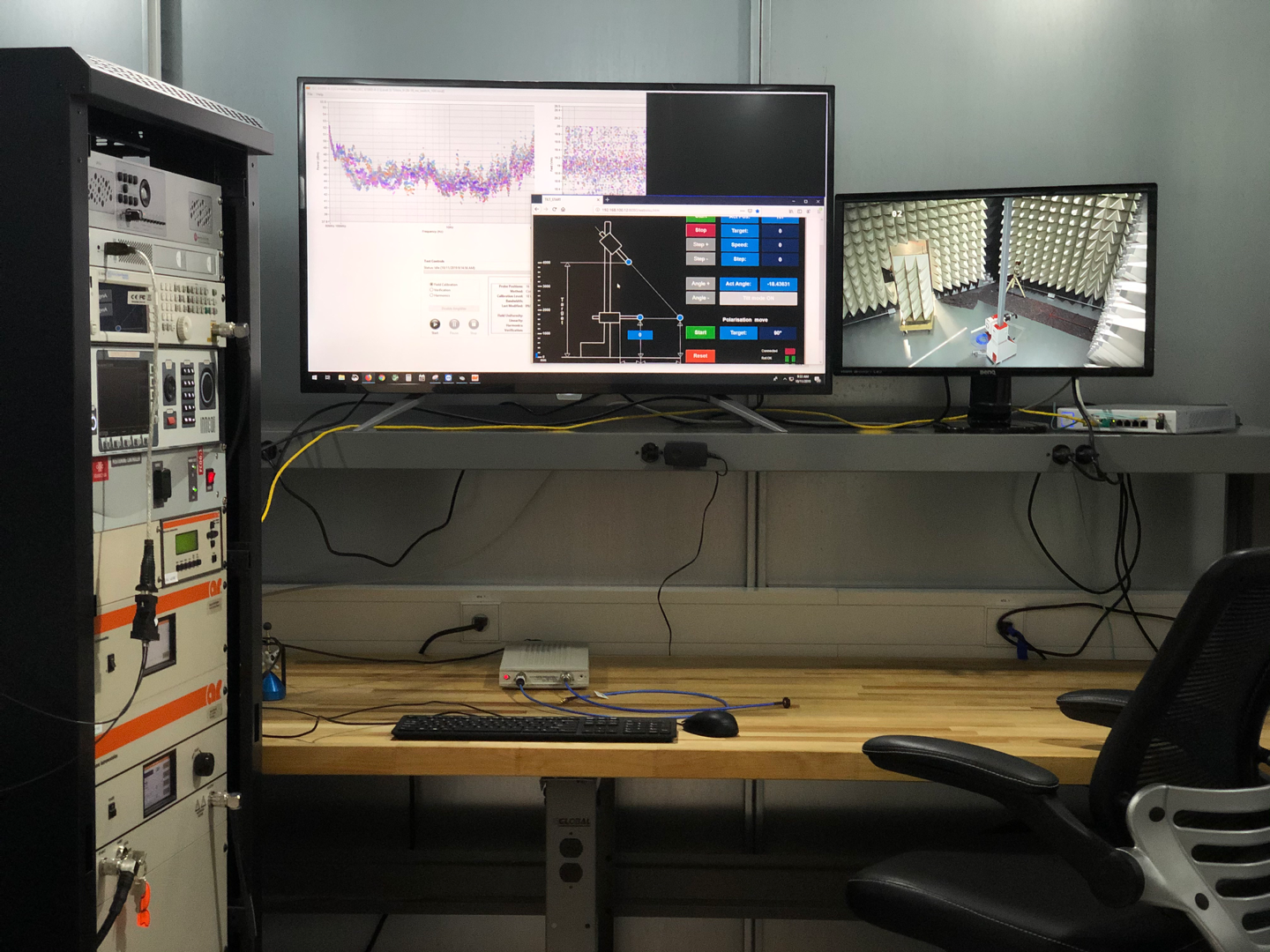
When a chamber’s door is closed, engineers work in the shielded control room with test equipment next to the chamber and oversee test progress. This eliminates any potential source of emissions from interfering with testing. Cameras inside the chamber help ensure the test setup remains intact with automated DUT position and antenna adjustments.
Accredited Accuracy, Shorter Time to Market
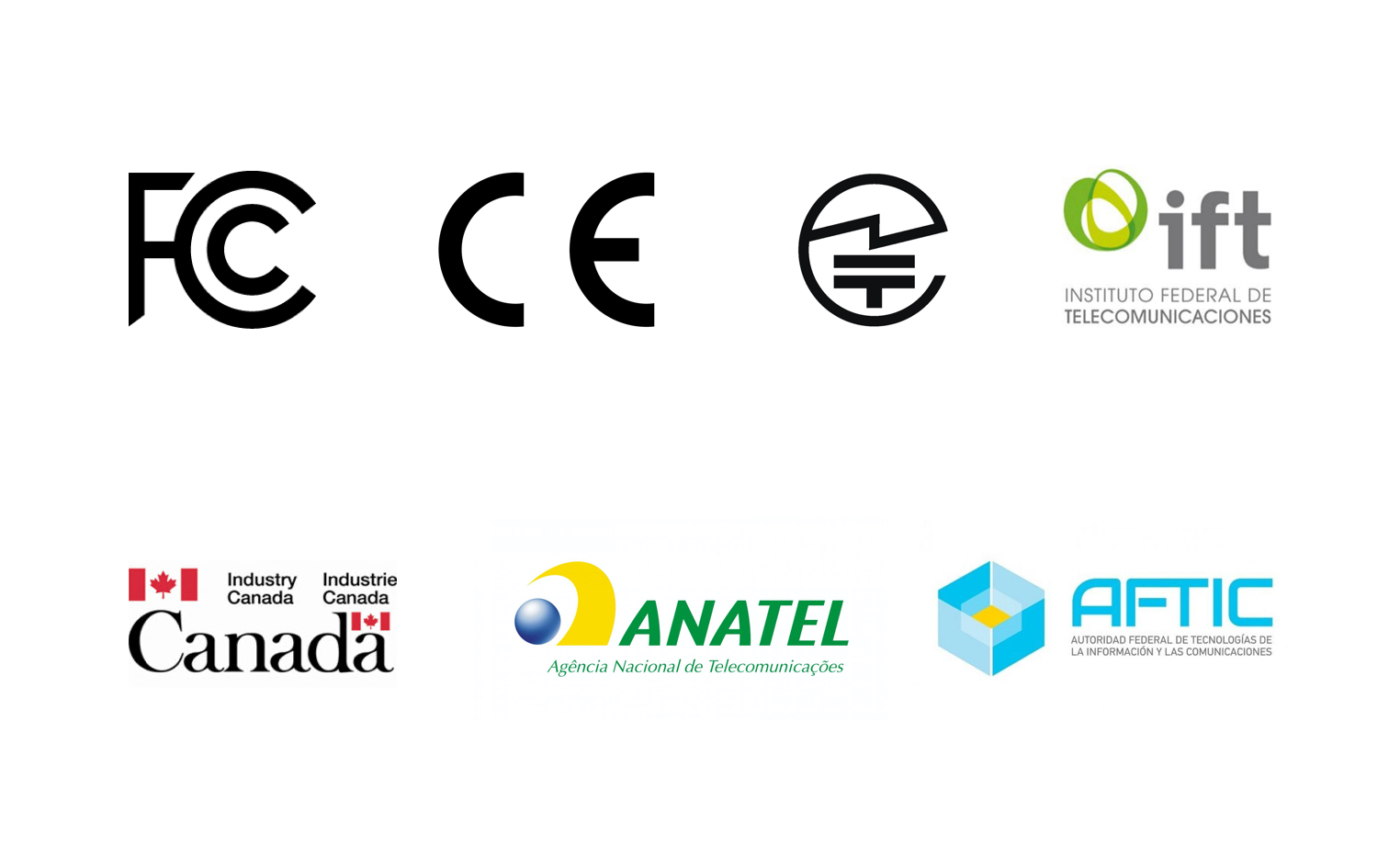
Governments heavily regulate RF, EMC, and safety testing. The Federal Communications Commission (FCC); Innovation, Science and Economic Development Canada (ISED); European Union directives (CE Mark), regulate RF devices and potential interference to licensed operations respectively for the US, Canada and European Union.
Since all regions and countries have their own regulations, the resulting testing effort for each new product is significant. The Salt Lake City lab’s new accreditation by the National Voluntary Laboratory Accreditation Program (NVLAP) of the National Institute of Standards and Technology (NIST) means our engineers can perform a broad range of performance and regulatory compliance tests quickly expediting product’s time-to-market.
These are the most common test requirements:
- RF parameters
- RF performance, limits, and requirements for transmitters
- Radiated and conducted emissions
- Limits unintentional emissions across various frequency bands and test mode
- Radiated and conducted immunity
- Test for product susceptibility to external radio energy, ensuring product reliability
- Static discharge, surge, and fast transient immunity
- Ensures that various magnitudes and types of voltage and current spikes can be withstood by the product without degradation of performance or abnormal behavior
- Product safety
- Tests to ensure international safety standards are met or exceeded to reduce the hazard to humans and the environment
Source :
https://blog.ui.com/2019/12/04/ui-expands-lab-with-anechoic-chambers-to-deliver-products-faster/
- Tests to ensure international safety standards are met or exceeded to reduce the hazard to humans and the environment